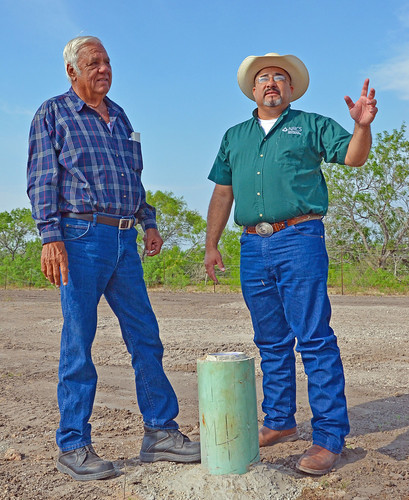
For months, South Texas ranchers have been struggling to keep cattle fed and watered through extraordinary drought conditions. Water wells and stock tanks have run dry, and some ranchers are left with no alternative but to truck water in to cattle.
Mother Nature recently added insult to injury in drought-stricken Benavides when softball-sized hail fell during a one-inch rainfall event. Strong winds quickly dried up any moisture.
“Duval County has been in exceptional drought for the last 12 months,” says Sammy Guerra, USDA Natural Resources Conservation Service district conservationist in Benavides. “Some parts catch a rain that will start greening up the grasses. Then, we have these 40-mile-per-hour winds consistently that dries out [the soil]. We just haven’t had the conditions to grow any grass.”
Willie Utley is all too familiar with the day-to-day struggles of persistent drought. The Benavides rancher has been hauling water to one of his pastures for months and moved some cattle to leased pastures where there is available water. Normal annual rainfall in Duval County is 24 inches, but Utley’s ranch has received only an estimated 10.5 inches over the past two years.
“Three or four years ago I used to have 60 head of cattle. Now I’m down to about 25,” Utley says.
The need for livestock water brought Utley into his local NRCS field office. He applied for and received funding from the agency to help install a solar-powered water well through the USDA’s national StrikeForce Initiative for Rural Growth and Opportunity.

The StrikeForce Initiative addresses high-priority funding needs in rural communities in 16 states, including Texas. The initiative provides an opportunity for NRCS to work with landowners to determine how to best leverage available financial assistance to address their natural resource concerns.
Drilling of the well was recently finished, and a solar-powered pump will soon be installed to provide fresh, cool water to livestock and wildlife. Utley said that without financial assistance through the StrikeForce Initiative, he would not have been able to afford a new well. One reason is that it has been costly over the past couple of years to provide supplemental feed such as hay.
Utley is taking the steps needed to efficiently manage his ranch through the drought. Once forages on the drought-stricken pastures have had some time to recover, he hopes to move his cattle back to the pasture where the new water well has been established.
“It’s going to be a big improvement and not having the worry of not having water when you need it,” he says.
